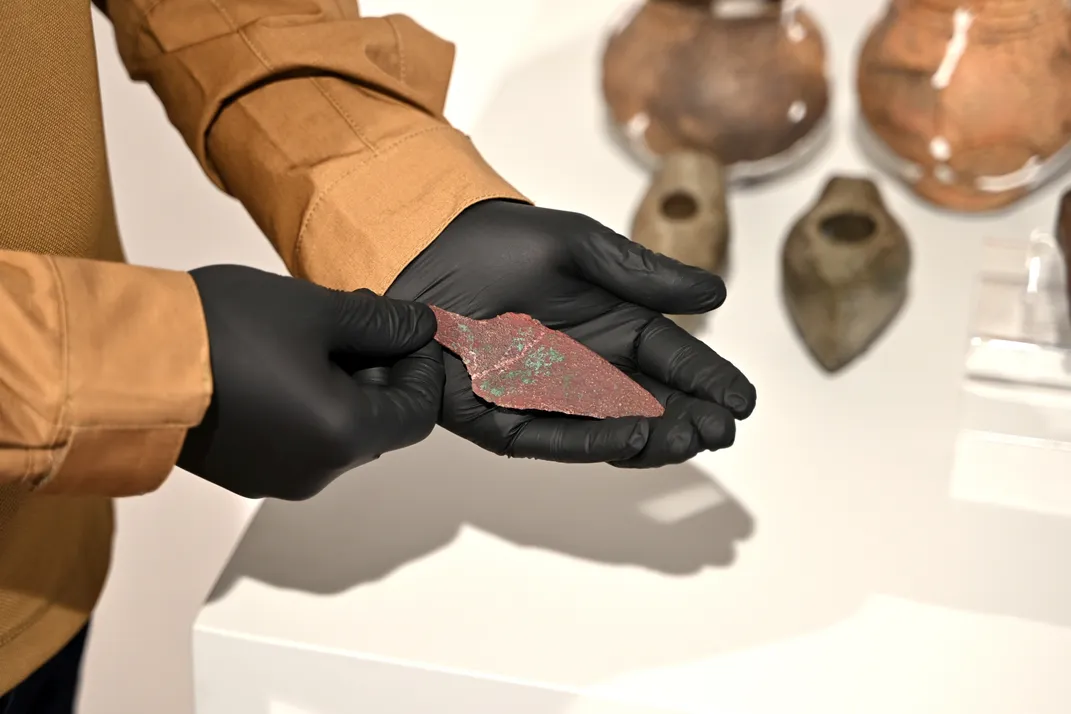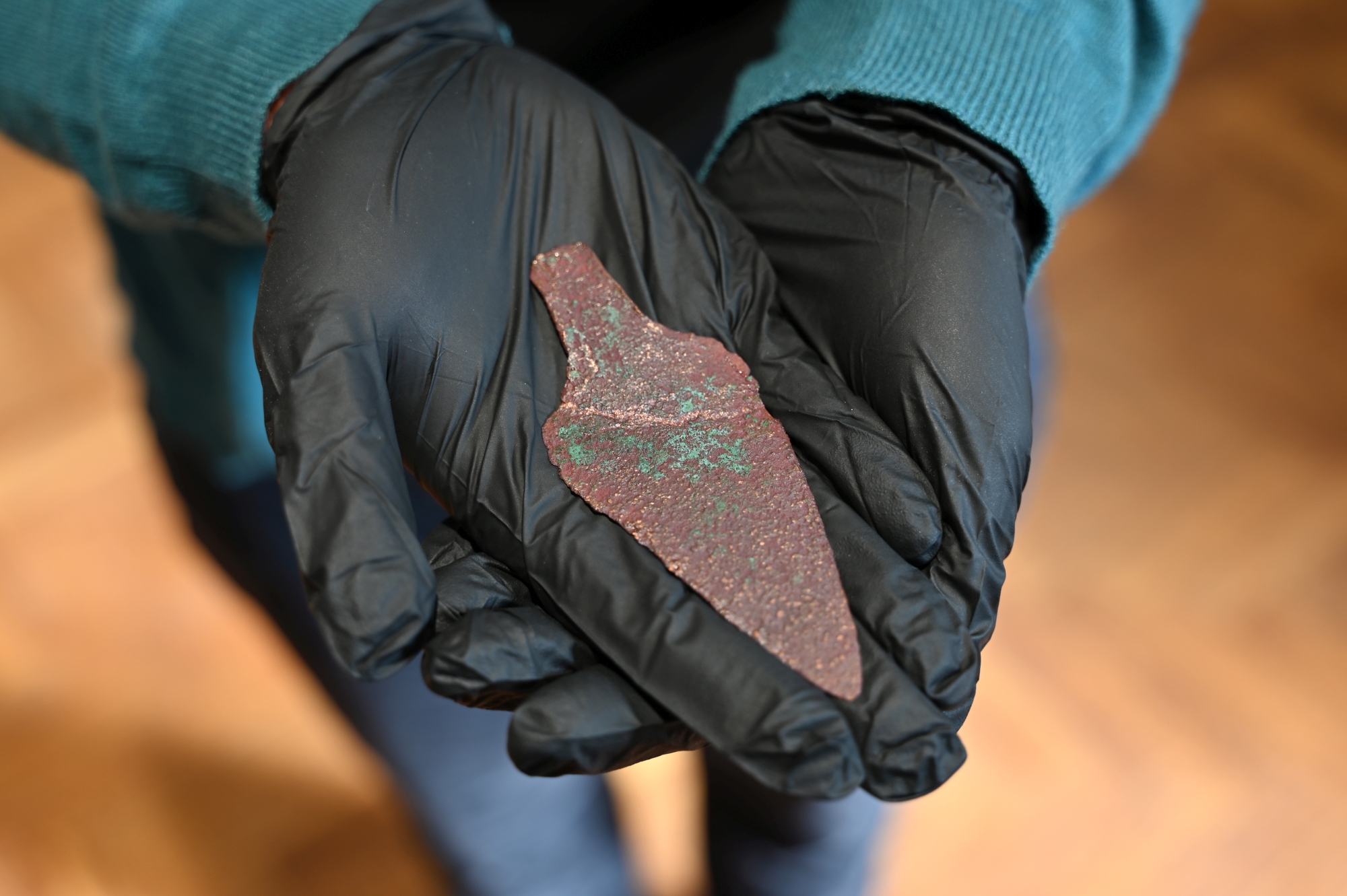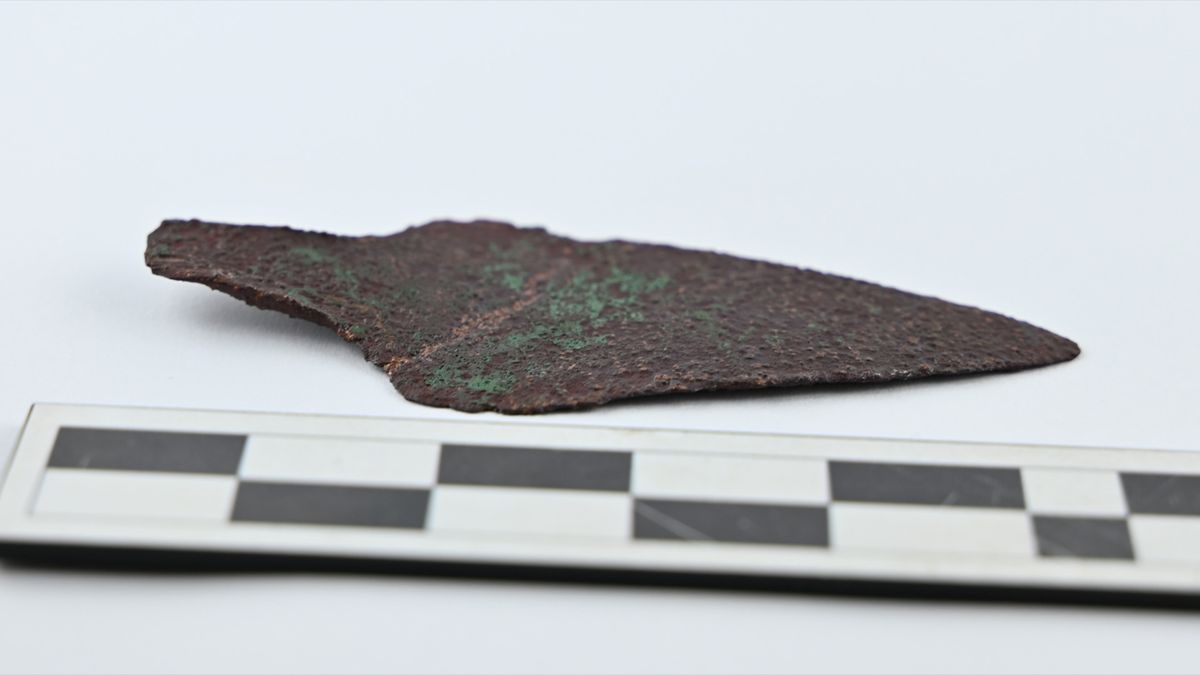A remarkable archaeological find has been unearthed in southeastern Poland—a copper dagger dating back over 4,000 years. This ancient artifact, discovered in a forest near Jarosław, offers valuable insights into the early use of metal in tool-making and provides a glimpse into the technological advancements of the period. As the oldest dagger ever found in the Subcarpathian Voivodeship, its discovery sheds light on the transition from the Stone Age to the Bronze Age in Polish history.
Discovery of the Dagger

In November of last year, metal detectorist Piotr Gorlach, a member of the Historical and Exploration Association Grupa Jarosław, stumbled upon the ancient dagger. Gorlach, who was initially searching for World War-related artifacts, was on his way back to his car when his detector picked up a signal from beneath the forest floor. To his astonishment, he unearthed a metal piece covered in a green patina, which he quickly realized was much older than the World War I shrapnel he had been hoping to find.
Recognizing the significance of his find, Gorlach notified the local heritage officials. Archaeologists from the Orsetti House Museum in Jarosław were promptly deployed to assess the discovery.
Significance of the Find

Dr. Marcin Burghardt from the Jarosław museum has dated the dagger to the latter half of the third millennium BC. This period marks a time of significant transition in Polish history, characterized by a shift from the use of flint tools to the adoption of metal products.
“This era represents a pivotal moment in the region’s technological evolution,” Dr. Burghardt explained. “The introduction of metal tools and weapons indicates the beginning of the Bronze Age, a period marked by the use of bronze—an alloy of copper and tin—rather than flint.”
A Rare Copper Artifact

Dr. Elżbieta Sieradzka-Burghardt, also from the Jarosław museum, noted that the dagger was not made of bronze but of copper. This detail is particularly significant as it predates the development of bronze metallurgy. “Copper items were exceedingly rare during the third millennium BC,” she said. “Such artifacts were typically reserved for individuals of high social standing.”
The dagger’s rarity and craftsmanship suggest it was not a local product. Experts speculate that it may have originated from the Carpathian Basin or the Ukrainian steppe. Further metallurgical analysis is expected to provide more clarity on its origin.
Conclusion
The discovery of the 4,000-year-old copper dagger is a groundbreaking find in Polish archaeology. As the oldest known dagger in the Subcarpathian Voivodeship, it provides crucial evidence of the early use of metal in the region. The dagger will undergo conservation and further study before being featured in an exhibition at the Orsetti House Museum in Jarosław starting in June. This display will offer the public an opportunity to view and appreciate one of the earliest examples of metalworking in Poland’s ancient history.
